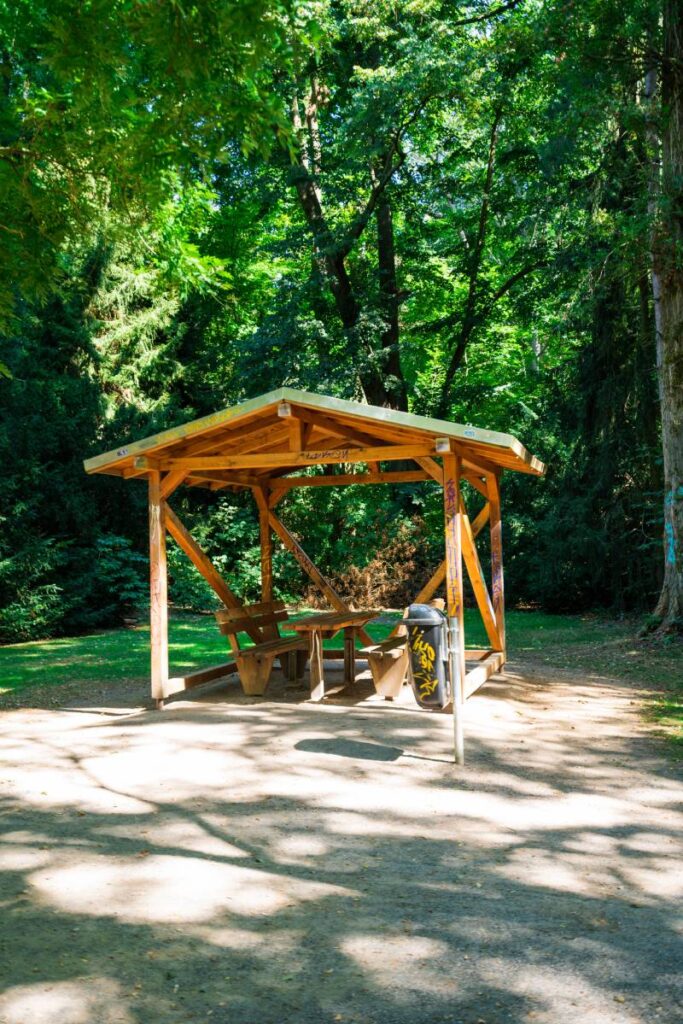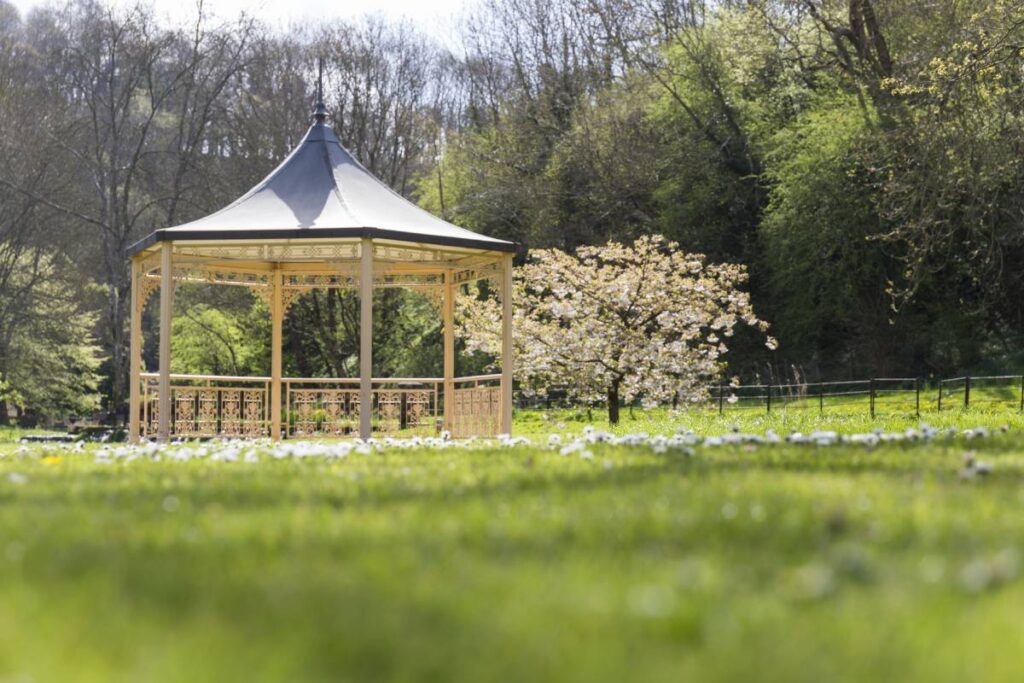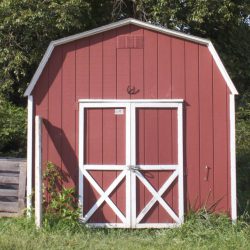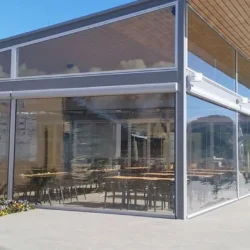When it comes to creating a perfect outdoor retreat, you need to consider a few things like the style of your home, functionality of the space, and your personal preferences. Now, if you want to enhance your outdoor living area, you have two popular options: pergolas and gazebos. Although both structures offer shade and a focal point for gatherings, they differ in design, function, and suitability for different types of homes.
In this article, we’ll explore the differences between pergolas and gazebos, discuss which types of homes they best complement, and delve into the costs associated with each option.
Whether you are planning for a modern oasis or a classic garden retreat, understanding the distinctions between pergolas and gazebos will help you create the ideal outdoor sanctuary that suits your lifestyle and preferences.
More like this:
What is the difference between a pergola and a gazebo?
Pergolas and gazebos are both popular outdoor structures that can enhance the beauty and functionality of your backyard or garden. While they share some similarities, such as providing shade and a focal point for outdoor gatherings, there are distinct differences between the two.
Pergolas
A pergola is an outdoor structure consisting of vertical posts or pillars that support crossbeams and an open lattice roof. Pergolas are designed to create a defined space in your outdoor area while allowing plenty of sunlight and airflow.
Here are some key features and characteristics of pergolas:

- Open Design: One of the defining features of a pergola is its open-roof design. The lattice or grid-like roof allows sunlight to filter through while providing partial shade. This makes pergolas ideal for growing climbing plants like vines and ivy, adding a natural and green element to the structure.
- Versatility: Pergolas come in various shapes, sizes, and styles, allowing for customization to suit your specific needs and aesthetic preferences. They can be attached to a building or stand alone in the garden, providing a versatile outdoor living space for dining, lounging, or entertaining.
- Minimalist Structure: Compared to gazebos, pergolas typically have a more minimalist and contemporary design. The focus is on the structure itself, with less emphasis on enclosed spaces or elaborate architectural details.
- Enhanced Privacy: While pergolas are open structures, they can still offer a degree of privacy depending on how they are positioned and used. Adding curtains, drapes, or screens to the sides of the pergola can create a sense of seclusion and intimacy within the outdoor space.
Gazebos
A gazebo is a freestanding, octagonal or hexagonal structure with a solid roof and open sides. Gazebos are often used as focal points in gardens or parks, providing shelter from the sun and rain while offering a picturesque setting for relaxation and socializing.
Here are some key features and characteristics of gazebos:

- Enclosed Structure: Unlike pergolas, gazebos have a fully enclosed roof, which provides complete protection from the elements. This makes gazebos ideal for outdoor dining, hosting events, or simply enjoying the outdoors in comfort, regardless of the weather.
- Architectural Details: Gazebos are known for their ornate architectural details, including intricate carvings, decorative trim, and elegant roof designs. These features add visual interest and charm to the structure, making it a focal point in any outdoor setting.
- Defined Seating Area: Gazebos typically have built-in benches or seating areas, providing a designated space for relaxation and socializing. Some gazebos may also include amenities such as lighting, electrical outlets, or even built-in speakers, enhancing the functionality and comfort of the space.
- Formal Appearance: Compared to pergolas, gazebos often have a more formal and traditional appearance, making them well-suited for formal gardens, parks, or upscale outdoor venues. Their solid roof and enclosed sides create a sense of intimacy and shelter, perfect for special occasions or quiet moments of reflection.
In short, while both pergolas and gazebos offer shelter and ambience in outdoor spaces, they differ in design, functionality, and aesthetic appeal. Pergolas are open structures with a focus on simplicity and versatility, while gazebos are enclosed spaces with ornate architectural details and a more formal appearance.
Which one suits which types of homes?
Determining which outdoor structure best suits your home depends on various factors, including architectural style, landscape design, and personal preference. Let’s explore how pergolas and gazebos complement different types of homes:
Pergolas
Pergolas are versatile outdoor structures that can complement a wide range of home styles. Their open design and minimalist aesthetic make them well-suited for modern, contemporary, and transitional homes. Here’s how pergolas can enhance different types of residences:
- Modern Homes: Pergolas with clean lines, sleek materials like aluminium or steel, and minimalist design elements are perfect for modern homes. They create a seamless transition between indoor and outdoor living spaces, providing a stylish backdrop for outdoor entertaining and relaxation.
- Traditional Homes: While traditionally styled pergolas may seem more at home in modern settings, they can also complement traditional or rustic homes. Wooden pergolas with classic details like arched beams or decorative end cuts add warmth and character to the outdoor space, blending harmoniously with the architectural style of the home.
- Transitional Homes: Transitional homes, which combine elements of both modern and traditional design, benefit from the versatility of pergolas. A pergola with a mix of wood and metal accents, simple yet elegant design features, and customizable options allows homeowners to tailor the structure to suit their transitional aesthetic seamlessly.
- Small Spaces: Pergolas are an excellent choice for homes with limited outdoor space. Their open design creates the illusion of a larger area while providing shade and defining the outdoor living space. Compact pergolas can be installed on patios, decks, or even rooftop gardens, maximizing usable space without overwhelming the surroundings.

Gazebos
Gazebos, with their enclosed structure and ornate details, evoke a sense of elegance and grandeur that complements certain architectural styles. Here’s how gazebos can enhance different types of homes:
- Victorian Homes: Victorian-style homes, known for their ornate detailing and romantic charm, pair beautifully with gazebos. A gazebo with intricate scrollwork, decorative trim, and a steeply pitched roof adds to the period charm of Victorian architecture, creating a picturesque focal point in the garden or backyard.
- Colonial Homes: Colonial-style homes, characterized by their symmetrical facades and traditional elements, are well-suited to gazebos with classic architectural features. A gazebo with columns, pediments, and a cupola reflects the timeless elegance of Colonial design, enhancing the historical appeal of the property.
- English Cottage Homes: Gazebos evoke the cosy, inviting atmosphere of English cottage gardens, making them an ideal addition to this type of home. A gazebo with a thatched roof, rustic wooden beams, and climbing vines creates a charming retreat reminiscent of an English countryside garden, perfect for enjoying tea or hosting intimate gatherings.
- Large Properties: Gazebos are particularly well-suited to large properties with expansive gardens or sprawling landscapes. Their substantial size and architectural presence make them a natural focal point in spacious outdoor settings, providing a sense of scale and grandeur that complements the overall aesthetic of the property.
While both pergolas and gazebos can enhance outdoor spaces, their suitability for different types of homes varies based on architectural style, landscape design, and personal preference.
Pergolas are versatile structures that blend seamlessly with modern, traditional, and transitional homes, while gazebos add elegance and charm to Victorian, Colonial, English cottage, and large properties with expansive landscapes.
Ultimately, the choice between pergolas and gazebos depends on the desired aesthetic, functional needs, and overall vision for the outdoor space.
How much does a pergola and a gazebo cost in Australia?
The cost of a pergola or gazebo in Australia can vary widely depending on several factors, including the size, materials used, design complexity, and any additional features or amenities. To give you an idea of the potential costs involved, let’s break down the expenses associated with each structure:
Pergolas
Pergolas are generally more affordable than gazebos due to their simpler design and construction. However, the cost can still vary depending on various factors:
- Materials: The choice of materials significantly impacts the cost of a pergola. Common options include timber, aluminium, steel, and vinyl. Timber pergolas are popular for their natural beauty but can be more expensive than metal or vinyl alternatives. Hardwood timber such as Merbau or treated pine tends to be more costly than softwood options like cedar or pine.
- Size: The size of the pergola directly affects the cost, as larger structures require more materials and labour to construct. A small, basic pergola suitable for a patio or deck may cost less than a larger pergola designed to cover a spacious outdoor area.
- Design Complexity: Pergolas come in various designs, from simple rectangular structures to more elaborate custom designs with intricate detailing. As the complexity of the design increases, so does the cost, as it requires more time and expertise to build.
- Additional Features: Optional features such as integrated lighting, retractable canopies, or privacy screens can add to the overall cost of a pergola. These features enhance the functionality and aesthetic appeal of the structure but come with additional expenses.
On average, you can expect to pay anywhere from AUD $3,000 to $10,000 or more for a standard-sized timber pergola in Australia. Larger or more elaborate pergolas with custom features can cost upwards of AUD $15,000 or higher.

Gazebos
Gazebos tend to be more expensive than pergolas due to their enclosed design, larger footprint, and additional features. Here are the key factors influencing the cost of a gazebo:
- Materials: Like pergolas, gazebos can be constructed from various materials, including timber, metal, and vinyl. Timber gazebos are often the most expensive option due to the cost of high-quality wood and the labour-intensive construction process.
- Size: The size of the gazebo is a significant factor in determining its cost. Larger gazebos with more extensive footprints and higher ceilings require more materials and labour, resulting in higher costs.
- Design Complexity: Gazebos come in different styles, including traditional octagonal or hexagonal designs and more contemporary variations. Intricate architectural details, such as decorative trim, curved roofs, or custom features, can increase the cost of construction.
- Additional Features: Similar to pergolas, optional features like built-in seating, electrical wiring for lighting or fans, and screening or curtains can add to the overall cost of a gazebo.
In Australia, the cost of a standard-sized timber gazebo typically ranges from AUD $5,000 to $20,000 or more, depending on the size, materials, and design complexity. Larger or custom-designed gazebos with premium features can exceed AUD $30,000 or higher in price.
It’s essential to obtain quotes from reputable contractors or suppliers and consider your budget, preferences, and intended use of the structure when planning your pergola or gazebo project. Additionally, factor in any additional expenses for site preparation, permits, and landscaping to ensure a comprehensive understanding of the total cost involved.
In conclusion
Pergolas and gazebos both bring their own charm to Australian outdoor spaces. Pergolas, with their open structure, fit well with various home styles and offer a tailored space that blends with the natural environment.
Gazebos, on the other hand, are all about sophistication and are perfect for homes with a classic touch or spacious gardens. Pergolas are generally more budget-friendly and adaptable, while gazebos are the go-to for a cosy, detailed haven.
Choosing between a pergola and a gazebo boils down to what you prefer, how much you want to spend, and your home’s design. Think about these aspects, balance the pros and cons, and you’ll be able to craft a delightful outdoor sanctuary that’s all your own, for year-round pleasure.
















